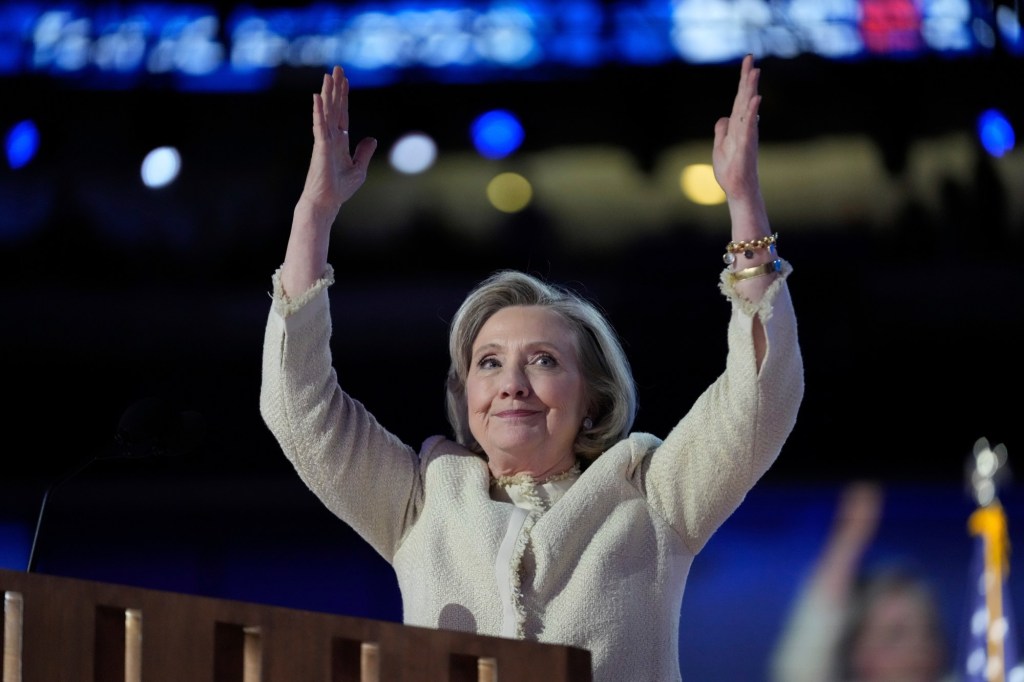Once again, we are seeing how female nominees create excitement in presidential politics. But in the past, it’s mostly worn off by Election Day.
Kamala Harris and the Democrats hope this time will be different, but it’s too early to know.
The vice president’s nomination marks the fifth time in the last 40 years that one of the two major political parties has put a woman on its national ticket. But in all but the most recent case, when the then-California senator joined Joe Biden on the winning 2020 Democratic combo, that instant excitement dissipated by Election Day — twice involving the Democrats, once the Republicans.
Remember Sarah Palin? Republican presidential nominee John McCain’s unexpected choice of the 44-year-old Alaska governor to join the 2008 GOP ticket baffled many Republicans, since she was unknown outside political circles.
But her acceptance speech at the Republican Convention set off a wave of euphoria that lasted beyond that week and briefly sent the GOP ticket’s poll numbers soaring above the favored Democratic team of Sens. Barack Obama and Joe Biden.
It didn’t last. Interviews revealed damaging gaps in Palin’s knowledge, and McCain’s weak reaction to the banking crisis turned the crucial economic issue strongly in Obama’s favor.
By October, Tina Fey’s spot-on portrayal of Palin on NBC’s “Saturday Night Live” helped turn her into more laughingstock than serious candidate, and the GOP ticket lost decisively.
Not ready yet
By contrast, the Democrats’ first woman vice presidential nominee, New York Rep. Geraldine Ferraro, never had a chance. She too stirred excitement when 1984 Democratic presidential nominee Walter Mondale picked her in a “Hail Mary” effort to change the dynamic that saw Republican President Ronald Reagan headed for a decisive re-election.
In the short run, it showed promise. Ferraro galvanized the convention in San Francisco and gave some Democrats the belief that they just might be able to overcome the odds and regain the presidency that Reagan had captured from President Jimmy Carter just four years earlier.
But the convention high soon wore off, and Ferraro, like most vice presidential nominees, had little impact on the outcome. Reagan cruised to victory, capturing 59% of the popular vote and every state but Mondale’s home of Minnesota. Like most Hail Mary football passes, this one failed.
Palin and Ferraro were picked to boost underdog candidacies. The next time, a female candidate won a place on the national ticket on her own.
That was when former first lady, New York Sen. and Secretary of State Hillary Clinton, narrowly defeated by Obama in 2008, captured the 2016 Democratic presidential nomination after a surprisingly stiff primary challenge from Vermont Independent Sen. Bernie Sanders.
A jubilant Democratic Convention acclaimed Clinton, as she gave her acceptance speech clad in the white that symbolized the women’s suffrage movement. Polls showed her headed for victory over insurgent Republican outsider Donald Trump.
But her campaign was beset by lingering problems from her improper use of a private email server for some government business. Her strategists made a strategic error by seeking to expand the Democratic base while ignoring the need to nail down such essential base states as Michigan and Wisconsin.
Clinton also suffered from the sense that she was respected more than liked. In several Pennsylvania focus groups I attended that year, women voters said they considered her well-qualified but waffled on voting for her.
“I’m not a Hillary supporter, but I think she can handle it,” said Carla Wise, 48, a stay-at-home mother who leaned Republican. But she conceded, “I wish I liked her.”
Danyale Victor, 45, an African-American homemaker, said she was “a big supporter” of Clinton and considers Trump “a racist,” but was unsure about voting for her because Clinton was a woman and “I don’t think she can run the country.”
On Election Day, to the surprise of most — including Trump — she lost, accentuating doubts that the country was ready to elect a female president.
Positive persona
But four years later, after a primary contest in which three female Democratic senators made strong bids, presidential nominee Biden picked Harris as the party’s second female vice presidential nominee and its first of color.
Their narrow victory made the daughter of Jamaican and Indian immigrants the first woman to win one of the nation’s top two offices. And until recently, the Biden-Harris team was on track to represent the Democrats again – with uncertain prospects, at best.
But Biden’s withdrawal under pressure from party leaders catapulted Harris to the party’s presidential nomination, and the big crowds surrounding her initial campaigning have created a wave of excitement at this week’s Chicago convention leading up to her acceptance speech Thursday.
Now, as Democrats wonder if this time will be different, it’s already evident that Harris’ greatest advantage may be her positive persona. Unlike the often dour Clinton, she comes across as an upbeat, often smiling, sometimes laughing figure. And polling suggests her personal attributes are offsetting voter concerns about her positions on issues.
A new ABC-Washington Post-Ipsos poll showed her leading Trump marginally overall and on personal characteristics like honesty, having the necessary mental sharpness and representing your values. The former president led on issues like immigration, inflation and the economy.
The result may depend on whether she can maintain that advantage, especially in debates likely to be marked by issues-based questioning. If she can, this time will be different.
Carl P. Leubsdorf is the former Washington bureau chief of The Dallas Morning News. ©2024. The Dallas Morning News. Distributed by Tribune Content Agency.
